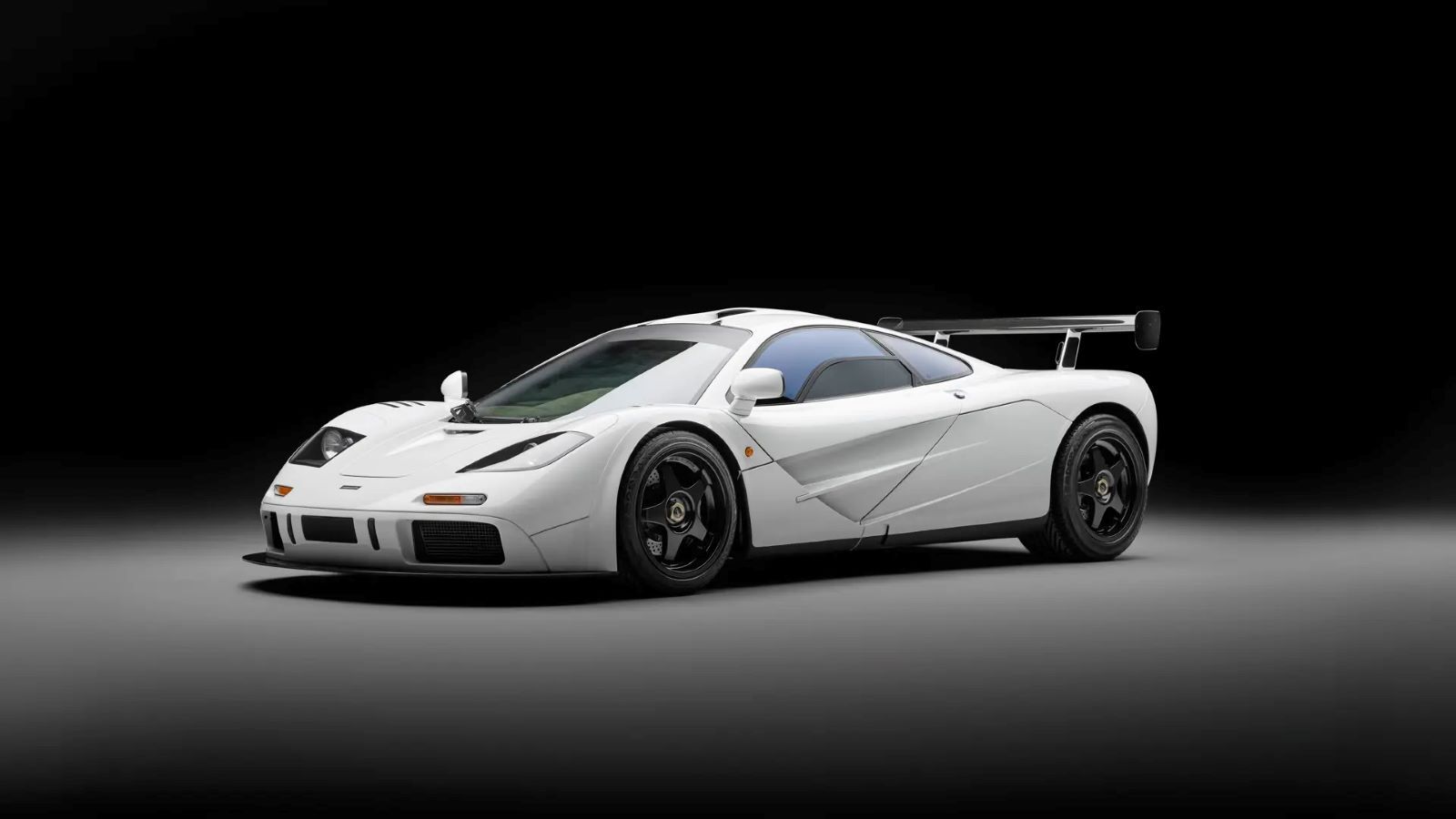The 1964 Ferrari 250 LM: A True Motorsport Icon at RM Sotheby’s Paris Auction
RM Sotheby’s is gearing up for what promises to be one of the most exciting events in the world of classic car auctions: its 12th annual European sale, held in the heart of Paris. The renowned ‘City of Lights’ has long been the backdrop for some of the most prestigious auctions, with the event taking place in the magnificent Les Salles du Carrousel at the Palais du Louvre. As one of the most opulent venues in the world, Paris provides a fitting stage for global collectors to showcase their most prized cars. The glittering Place Vendôme and Paris’s celebrated ‘Golden Triangle’ shopping district are just moments away, adding an extra layer of allure to an already extraordinary event.

The RM Sotheby’s Paris auction, set for February 4th and 5th, is expected to once again shatter records. The impressive lineup of vehicles spans from iconic racing classics to modern supercars, but one car is bound to stand out from the crowd: the 1964 Ferrari 250 LM. This particular model, a rare example of Ferrari's engineering excellence, has a rich racing history that cements its place as one of the most significant sports cars ever built. The 250 LM, presented for sale from the prestigious Indianapolis Motor Speedway Museum collection, offers an exceptional opportunity for collectors and enthusiasts alike.
Ferrari’s American Connection
The story of the Ferrari 250 LM and its place in racing history is inextricably linked with the legacy of Luigi Chinetti, an Italian racing driver who became one of Ferrari’s most important figures in the United States. Chinetti’s name is synonymous with Ferrari’s rise to prominence in America, and his connection to the brand began in the 1930s when he first met Enzo Ferrari during his time with Alfa Romeo. A skilled mechanic and a talented driver, Chinetti quickly made a name for himself on the racing circuit, particularly at the 24 Hours of Le Mans.
Chinetti’s first notable success came in 1932 and 1933 when he won the prestigious endurance race with Alfa Romeo. However, it was in 1949, driving a Ferrari 166 MM, that Chinetti achieved a historic victory: Ferrari’s first win at Le Mans. This triumph not only marked a significant achievement in motorsport but also cemented Ferrari’s growing reputation in international racing.
After relocating to the United States following World War II, Chinetti became the official Ferrari importer for North America in 1950, opening his first dealership in New York City before moving to Greenwich, Connecticut. His dealership quickly became the symbol of Ferrari’s allure in America, and Chinetti’s influence reached beyond car sales. In 1957, he founded the North American Racing Team (NART), which would go on to become one of Ferrari’s most important partners in motorsport. Over the next two decades, NART would field nearly 70 Ferraris at Le Mans, securing the team’s place in racing history.
The 250 LM: A Racing Revolution
Introduced in 1963 at the Paris Salon, the Ferrari 250 LM marked a major milestone in Ferrari’s automotive engineering. The 250 LM was the first Ferrari GT car to feature a mid-engine layout—a configuration that had already proven successful in Ferrari’s Formula 1 cars. Designed by Pininfarina and crafted by Scaglietti, the 250 LM was a stunning blend of aerodynamic design and powerful engineering. It was powered by a 3.3-litre V12 engine, offering a perfect combination of beauty and performance.
Despite its incredible promise, the 250 LM faced significant challenges in the competitive racing world. The Fédération Internationale de l’Automobile (FIA) rejected the car’s classification as a GT car, relegating it to the prototype category. This decision limited the car’s eligibility for many prestigious events. Frustrated with this setback, Ferrari turned to private teams, such as NART, to continue the car’s development and unlock its potential.
In 1965, NART entered one of its 250 LMs, chassis number 5893, at the 24 Hours of Le Mans. Driven by American Masten Gregory and Austrian Jochen Rindt, the car defied the odds and secured an extraordinary victory. Despite the presence of more advanced prototypes from Ford and Ferrari’s own Scuderia team, the NART Ferrari battled through the race’s challenging conditions. By the 21st hour, the car had taken the lead, ultimately winning the race by five laps.
This victory was historic for multiple reasons. Not only did it mark the first time a privately entered Ferrari had won Le Mans outright, but it also secured Ferrari’s sixth consecutive victory at the prestigious race. Remarkably, this would be Ferrari’s last overall win at Le Mans until the 499P’s triumph in 2023, making the victory of chassis 5893 even more significant.
A Legacy of Triumphs
The success of the 250 LM did not end at Le Mans. After its victory in 1965, chassis 5893 continued to compete in numerous endurance races, each time proving its resilience and competitiveness. In 1966, it finished 9th overall at the inaugural 24 Hours of Daytona. The following year, it returned to Daytona but suffered an accident, forcing its retirement. It was also involved in a crash at Le Mans in 1968, but the car demonstrated remarkable durability, returning in 1969 to finish 8th overall—a notable achievement for a car that was now five years old.
The car’s final major outing came in 1970 at the 24 Hours of Daytona, where it climbed from 44th place to finish in 7th position. This remarkable performance proved that the 250 LM was far from obsolete, and it further solidified the car’s status as one of Ferrari’s most iconic race cars.
The Enduring Legacy of the Ferrari 250 LM
With only 32 examples ever built, the Ferrari 250 LM is a rare and coveted piece of automotive history. Its victory at Le Mans, as well as its other remarkable racing accomplishments, place it among the most significant cars in the history of endurance racing. The 250 LM represents Ferrari’s commitment to innovation, and its success in the hands of privateers like NART speaks to the spirit of competition that defined the golden era of endurance racing.
Chassis 5893, in particular, stands as a testament to Ferrari’s engineering brilliance and racing legacy. After its final race in 1970, the car was sold to the Indianapolis Motor Speedway Museum, where it has been meticulously preserved for over five decades. The car retains its original engine and gearbox, along with extensive documentation that includes ownership records, race participation details, and its purchase history from the museum.
For those fortunate enough to be in Paris for RM Sotheby’s February auction, this 1964 Ferrari 250 LM will be a highlight of the event, offering a once-in-a-lifetime opportunity to acquire a car with a legacy as vibrant as its iconic ‘rosso corsa’ finish.
.jpg)


